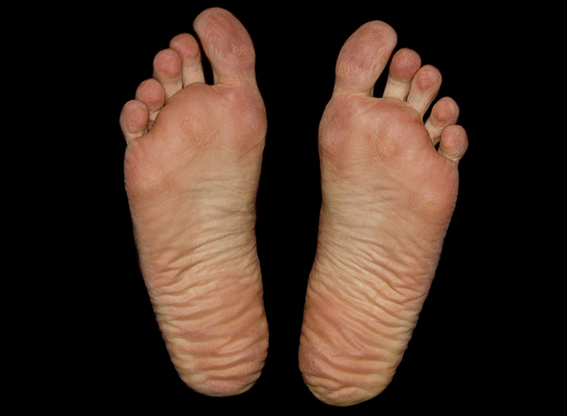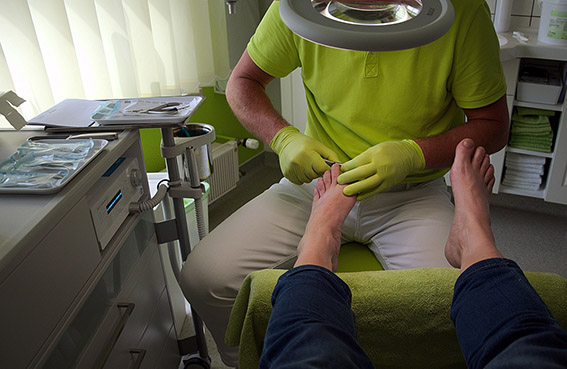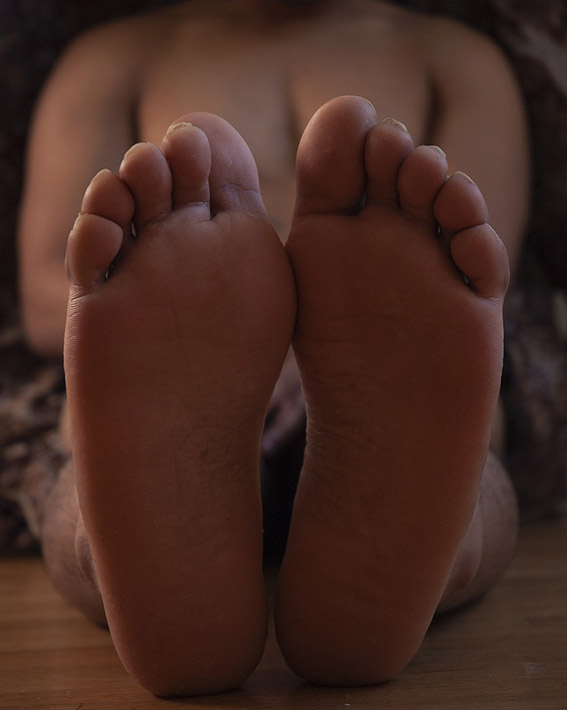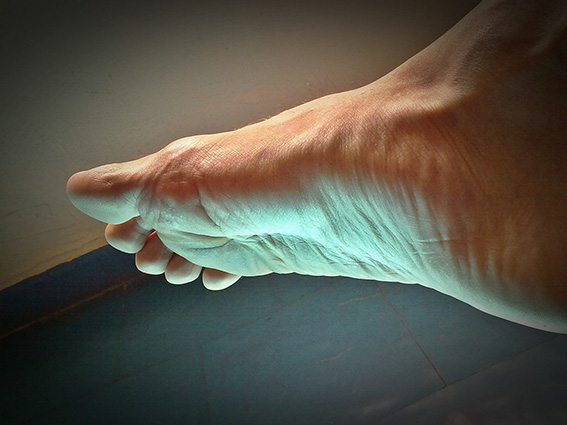Foot Pain Specialist
Seeking a Foot Pain Specialist in Mesquite, Nevada, or St. George, Utah?
Our feet are the foundation for nearly everything we do throughout the day. From exercising to chasing kids and grandkids to driving, our feet make it possible to get around and take care of business. Never is this more evident than when it hurts just to get out of bed. When every step makes you mentally say, “Ouch,” you know you’re in for a rough day.
Over-the-counter pain meds can take the edge off for a while, but they don’t last forever and can often cause side effects like upset stomachs. You end up popping pills like Tic Tacs just to get through the day. This onslaught of chemicals over time can damage your liver, which filters medications out of your blood.
Or, you can look for a foot pain specialist in Mesquite, Nevada, or St. George, Utah, who can find you lasting solutions.
Foot Anatomy
There are 26 bones in the foot. The foot’s arch goes from the heel to the ball of the foot on the foot’s inner edge. You can see it when you step on dry pavement with wet feet. The characteristic dip shows you that you have a strong arch. If there is no dip, your feet are flat, a condition you are either born with or develop over time as your arches fall.
The foot arch gets its shape from how the midfoot bones fit together and are held in place by fibrous tissues called tendons and ligaments. (Tendons connect bones to muscles. Ligaments connect bones to bones.) The muscles contract and relax to create movement. There are pads of fat that cushion your steps from impact forces. There’s a strong tissue that connects to the back of the heel, wraps the bottom of the arch, and connects to the ball of the foot called the fascia.
Together, the bones and soft tissue create a springboard that allows your foot to withstand the impact of thousands of steps every day. They help you self-correct if your foot hits uneven ground and you start to tip. They help you bounce, dance, run, or jump.
When these structures get pulled out of alignment, damaged, overstretched, or inflamed, every daily activity is painful. Pain is the signal that something is wrong, a warning to fix it before things get worse. Find your foot pain specialist today so you can get back on track.

What Causes Foot Pain?
While there can be multiple causes at once, here are the main foot injuries and conditions we see every day.
Direct Trauma: Pain is a natural result of trauma. People step on nails and broken glass and slip on rocks. Something can fall on the foot, breaking a bone and bruising the soft tissue. Sometimes, it seems like the only reason for a baby toe is to find furniture in the dark.
Overuse Fractures: The small bones of the foot can handle a lot of stress, but they have their limits. If one part of the foot gets disproportionately more of the load because the foot is at the wrong angle—or you go on a hike much longer than your body was prepared for—the stress can cause cracks in the bones.
Body Alignment: The body is a finely calibrated machine. Each joint has an optimal angle and range of motion. When one part of the body is hurt, the rest of the body can overcompensate, putting unusual stress on the other moving parts. When a person gains weight and their feet carry a heavier load than they’re designed to carry for months or years, it can cause the arch to fail, turning the ankle inward and affecting both the knees and hips. The foot strikes the ground at the wrong angle, causing pain in all three joints.
Shoes: The right pair of shoes can give you a bounce in your step that can carry you through the whole day. The wrong shoes can cause a lot of damage and foot pain.
- Elevated heels cause the fascia to shorten. Then, walking barefoot pulls on the shortened fascia, which can inflame the tissue and cause plantar fasciitis.
- Some people step on the outside of their heel and roll to the inner foot at the ball and toe, creating uneven wear and tear. The right shoes will correct your alignment and allow you to work with a more natural gait.
- The wrong shoes can also cause friction, create blisters, pinch the toes, and retain moisture, where fungus can grow.
Sprains and Strains: A sudden misstep can overstretch or even tear the tendons and ligaments in the foot and ankle. This type of sprain or strain makes the foot more prone to injury, can swell and throb, and makes it difficult to stand and walk without pain.
Arthritis: Sustained inflammation in foot joints can deteriorate the cartilage and joints. As damage continues, walking grows more painful.
Our foot pain doctors in Mesquite, Nevada, and St. George, Utah, can conduct a thorough exam to determine the source of your foot pain.

What Can I Expect at an Appointment with a Foot Pain Specialist?
Most foot pain specialists gather a comprehensive medical history. This may include a list of your current medications if 1) you’re being treated for any other condition and 2) there is a family history that might shed light on your current issues. Diabetes, for example, can be hereditary. If you experience nerve pain in your feet, it could be a sign you inherited the disease.
After the medical history, your doctor will perform a physical examination. They’ll have you stand, walk, and shift your weight so they can see the alignment of your joints. They will gently manipulate your feet to check your pulse, range of motion, oxygenation, flexibility, and strength. If you have tender spots, discernable breaks, or deformities, like hammertoes and bunions, they will check those as well.
If there are indications of arthritis or a broken bone, your doctor may order an x-ray to confirm or disprove their theory. They may send you to get an MRI if they suspect a soft tissue injury, like a torn ligament or tendon. Additional tests or imaging will depend on the severity of symptoms.
Once your foot doctor has a clear understanding of your condition, he or she will help you understand the diagnosis, treatment options, and what to expect. Together, you will devise a treatment plan that suits your unique needs. Treatment options may include:
- Pain medications and anti-inflammatories
- Physical therapy: Strong muscles may compensate to help out weaker muscles or to protect a painful injury while the injured muscles and structures lose strength. This causes unbalanced stress. Physical therapy works to even things out, improving function, alignment, flexibility, stability, and overall strength for long-term success.
- Orthotic shoes and insoles: When people have flat feet, fallen arches, or roll their feet in or out as they walk, specially designed shoes can provide support and stability to encourage more natural movement. Custom orthotics are good for protecting bunions, hammertoes, and other abnormalities. They are also an excellent option for people who are on their feet all day, such as factory workers, teachers, nurses, and more.
- Corrective devices: Sometimes, the joint needs extra support due to an injury, congenital disease, or medical procedures. Braces, walking boots, and other similar structures can help prevent further injury.
- Topical treatments: Sometimes, foot pain comes from a skin condition, like athlete’s foot, plantar warts, or toenail fungus. A medication or topical ointment could be the best solution in such cases.
- Surgery: Surgery may be the right decision if there are broken bones that need more than a splint to heal or your foot pain comes from a condition that can’t be remedied by physical therapy or corrective devices. In such cases, your foot pain surgeon will go over your options and how to get the best possible results.
Foot Pain Home Treatment
For minor sprains and injuries, here are some treatments you can do at home. For sprains, just remember the word R.I.C.E.
- Rest: The best thing you can do for an injured foot or ankle is to give it time to heal. Try not to put weight on the affected foot, a goal made easier by utilizing crutches and scooters where possible. If your balance is uncertain, you may opt for a wheelchair.
- Ice: Ice or ice packs can reduce swelling and ease discomfort. The cold causes the veins to restrict, redirecting some of the blood away from the damaged foot so it doesn’t throb. Just remember that you can get frostbite if you aren’t careful. Don’t ice longer than 15 minutes, and keep something between your skin and the ice, like a thin towel.
- Compression: Bandaging the wound can help stabilize the injury and prevent more damage. You can use a stretch bandage or athletic wrap. Try not to cut off circulation, or the throbbing can get intense. Make certain you can stick a couple of fingers between your skin and the bandage to provide free blood flow.
- Elevation: To draw some of the blood out of the foot and limit swelling, elevate the injured limb above your heart. Let gravity work for you.

Home treatments have their limits, however. Call your foot pain specialist if you practice R.I.C.E. and the pain doesn’t diminish greatly in two to four weeks. The damage needs intervention to heal right.
Peripheral Neuropathy: When you get numbness, tingling, or pain, you may have nerve damage. Discovering the underlying cause is essential to treating the damage before it becomes permanent. If, for example, your numbness and pain are caused by diabetes, then getting your blood sugar under control is essential for recovery. If medications like chemotherapy cause it, then you can use other therapies to increase your comfort while you’re going through cancer treatment. Every approach will be unique based on the root cause of the condition.
Midfoot Arthritis: Prolonged inflammation in the foot and ankle can destroy cartilage and make walking painful. A warm foot bath can ease aching muscles, while ice can reduce pain and inflammation. Orthotic or rocker-soled shoes can suction your foot on impact and help forward movement without adding as much strain to the foot. Topical arthritis creams or over-the-counter medications can ease the pain and lower inflammation. If it gets unmanageable, your doctor can fuse damaged bones to prevent them from shifting painfully and provide additional support.
Punctures, Cuts, and Scrapes: Minor injuries can be treated at home. If the skin is damaged, be sure to clean the area thoroughly. Apply antibiotic ointment and bandage the injury. Change the dressing at least twice a day. Keep it dry (other than the ointment) and clean, and you should see it heal over the next few days. That said, if redness or streaking spreads from the wound rather than shrinks or you experience elevated temperature, flu-like symptoms, or muscle weakness, get a same-day appointment or go to the emergency room as you may have an infection that needs immediate attention.

Perceived Levels of Pain
Your doctor may ask you to rate your pain. A good rule of thumb is to indicate the level of activity you can endure with the injury.
- Your pain only comes during activity, but you’re able to perform without problems.
- Your pain comes before and after activity, but you function normally.
- You’re able to participate, but the pain doesn’t go away, and your performance is hindered.
- Performance is out of the question, and you’re in too much pain to continue.
When to Look for Foot Pain Treatment in Mesquite or St. George?
If your foot pain interferes with your daily activities, causing you to stand or move unnaturally to compensate for pain, you should seek help immediately. Walking on damaged feet can lead to problems with your knees, hips, and back. A skilled podiatrist can help you overcome your injuries and move on with your life.
Why Go to the Foot & Ankle Center for Your Foot Pain Treatment?
The Foot & Ankle Center’s excellent medical team continues to exceed expectations in customer care. Our foot pain specialist, Dr. Cameron, is an American Podiatric Medical Association member and a fellow at the American College of Foot and Ankle Surgeons. He’s been a practicing podiatric surgeon since 2016 and now has two active practices, one in Mesquite, Nevada, and the other in St. George, Utah. He has surgical privileges at:
- St. George Regional Hospital
- Mesa View Regional Hospital
- Cedar City Hospital
Last Thoughts
Dr. Cameron is dedicated to serving these communities, his neighbors, and his friends. Together with his medical team, you will get the highly skilled, compassionate medical care you deserve. It’s time to heal, recover, and get back to an active and engaged life.
You can learn about Dr. Cameron or book a foot pain specialist appointment in our Mesquite or St. George offices via our website. You can also contact us at (435) 714-6996.
